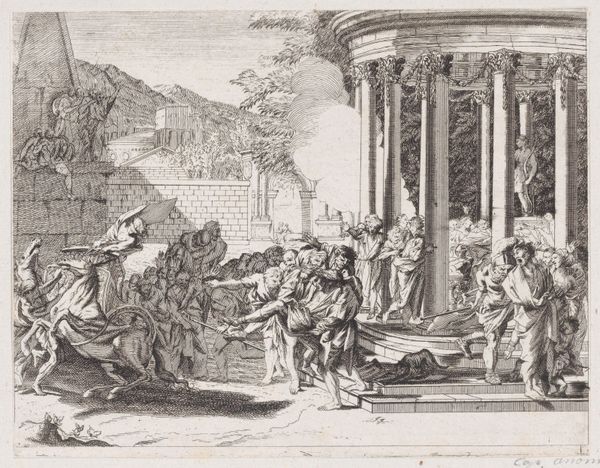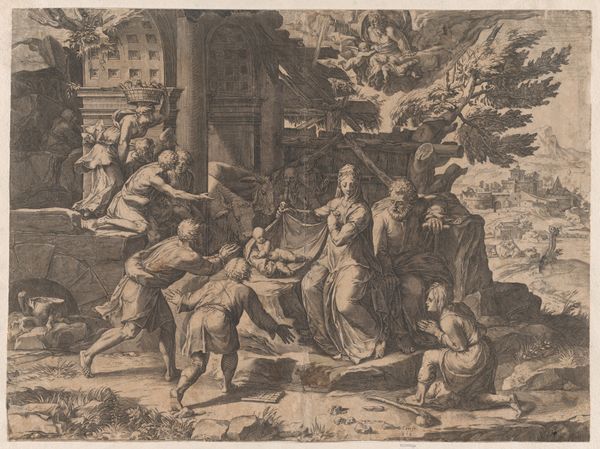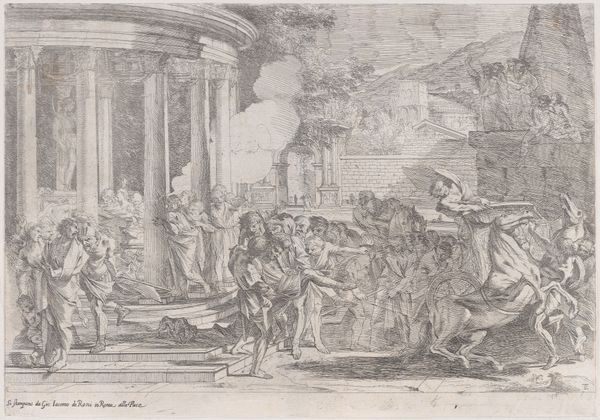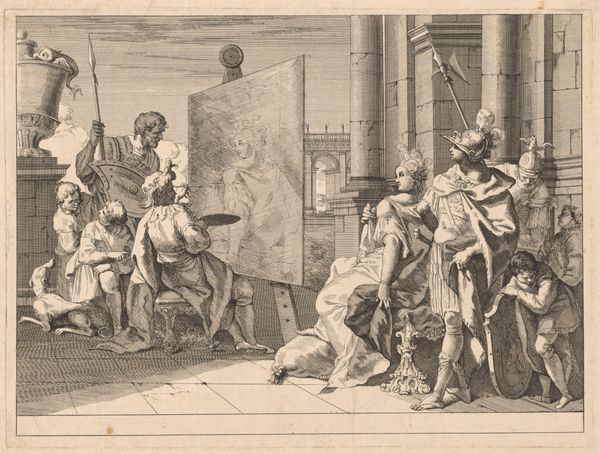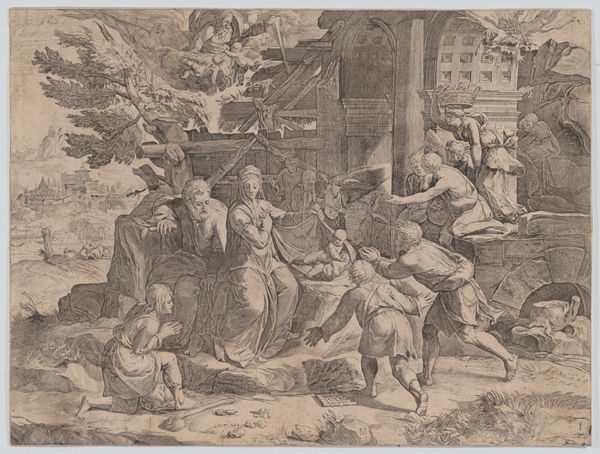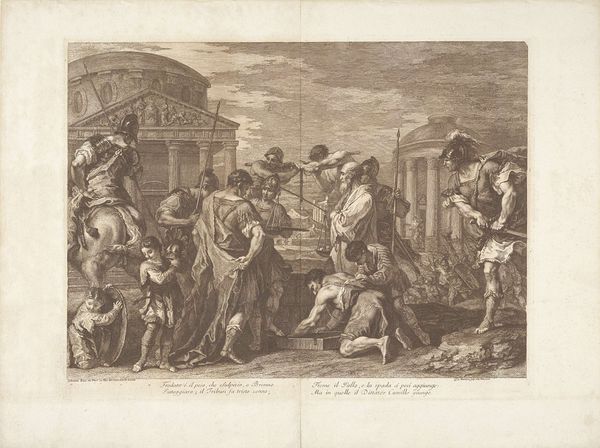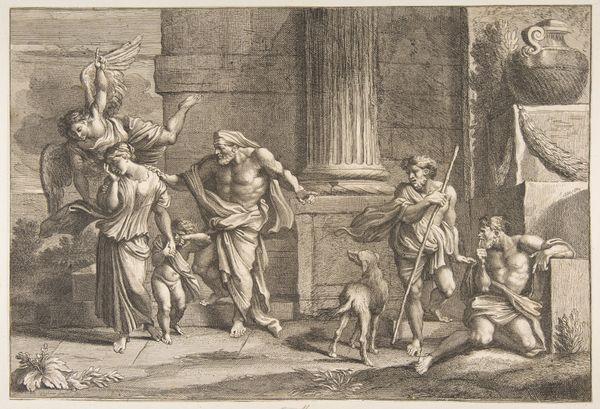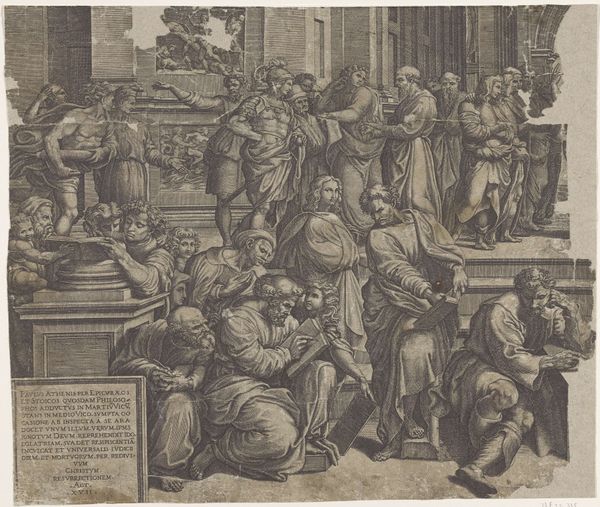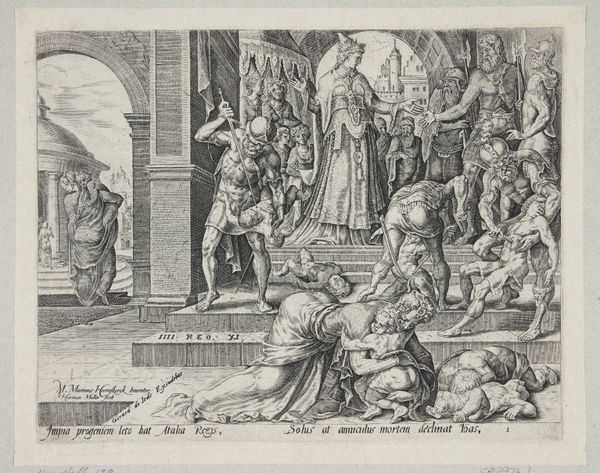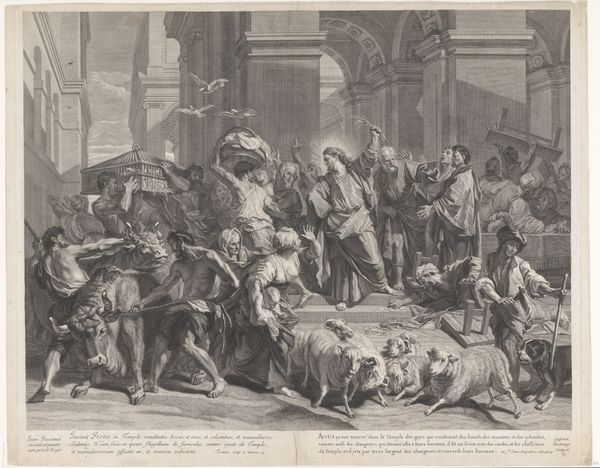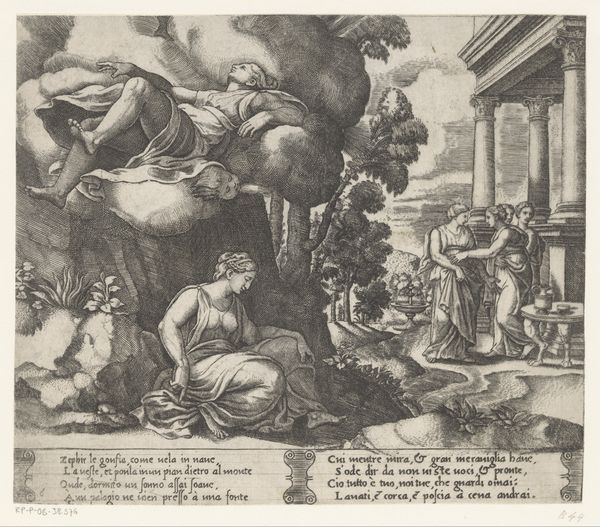
print, engraving
#
baroque
# print
#
landscape
#
perspective
#
figuration
#
history-painting
#
engraving
Dimensions: height 384 mm, width 419 mm
Copyright: Rijks Museum: Open Domain
Curator: This engraving, crafted between 1637 and 1659, captures "The Adoration of the Magi". Look at how d' Avice stages this biblical scene! The architectural elements seem almost like a ruin. Editor: Indeed, it’s a ruin! The raw texture almost jumps out. What strikes me immediately is the feeling of tension within decay. There's the serenity of the central scene juxtaposed with a more sinister action happening on the left side of the image. Curator: Yes, that contrast! Note also the light playing on the textures, which evokes the sacred narrative of acknowledgement of the baby Jesus. Do you think that light has a metaphorical significance? Editor: Definitely. Beyond the obvious divine implications, I'd say the visual weight gives way to a very charged moment about subjugation and dominance. There's that armed soldier, almost looming over the adoration itself. The print highlights issues of social standing and even violence intertwined within religious scenes. Curator: It also showcases how cultural narratives and historical memory operate, echoing and reverberating. This isn’t just a representation of a singular biblical event but a statement on the social and political landscape that time, and humanity's touch leaves on its history and symbols. Editor: Precisely! The choice to render what appears to be a traditional image with so much decay woven in speaks volumes about our ever-changing perception, reinterpretation, and sometimes violent engagement with history. This makes us look closely at whose stories are remembered, how, and at what cost. Curator: Ultimately, isn't art an open mirror to the continuous cultural reshaping through which these symbolic elements evolve? Editor: Yes. Looking at d' Avice’s "Adoration", one truly understands how layered meaning functions in both images and history.
Comments
No comments
Be the first to comment and join the conversation on the ultimate creative platform.
